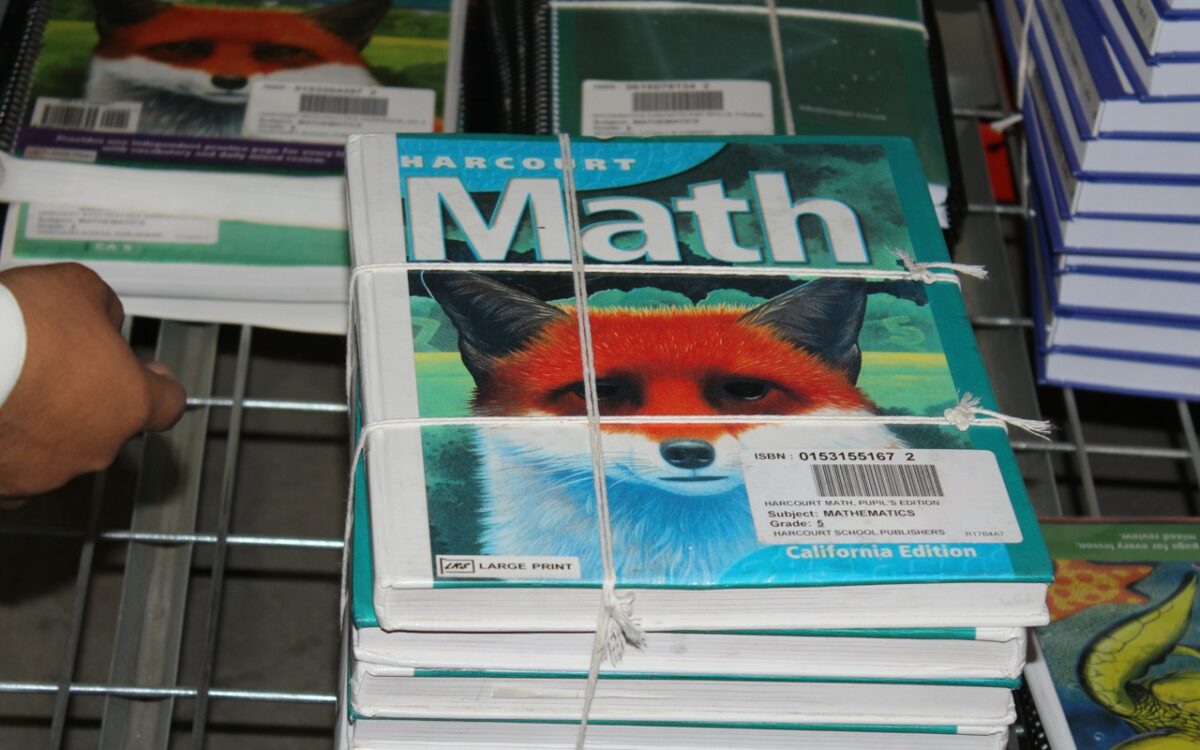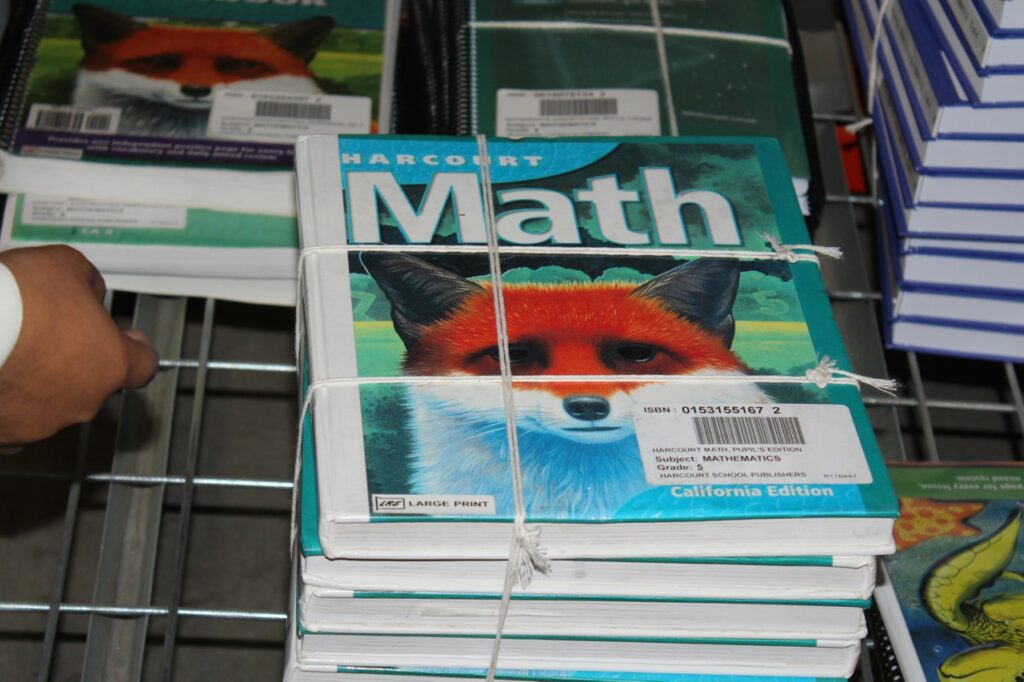Secondary One Mathematics An Integrated Approach Answers
 Credit: Jane Meredith Adams/ EdSource Today
Credit: Jane Meredith Adams/ EdSource Today
 Credit: Jane Meredith Adams/ EdSource Today
Credit: Jane Meredith Adams/ EdSource Today
Jay Harlow
October 27, 2015
This fall 9th-grade students in virtually all California high schools are taking math classes aligned with the Common Core standards. But for many of them there is an additional twist: they are embarking on a sequence of courses that represents a significant departure from how high school math has traditionally been taught in California and the nation.
Every district has had to decide whether to stick with a "traditional" sequence of courses in grades 9-11 (Algebra 1, followed by geometry, then Algebra 2, with some probability and statistics in each course) or adopt a new "integrated pathway" that combines and re-orders content from those courses in a three-year sequence.
That sequence is typically simply called Math I, Math II and Math III. Each course includes algebra, geometry, probability and statistics that are "integrated" with each other.
Thanks for signing up!
Stay informed with our daily newsletter
Regardless of which one they embrace, many teachers, schools and districts have been scrambling to find appropriate textbooks and supplemental materials, develop lesson plans, and provide professional development to teachers aligned with the new standards.
The state does not keep track of which approach districts are adopting. But an EdSource review of the state's 30 districts with the largest high school enrollments shows that the traditional approach – Algebra 1, geometry, Algebra 2 – is still used in 15 of them. The remaining 15 have embraced the integrated Math I, II and III pathway.
(See end of this article for a list of which approach the surveyed districts adopted.)
Of the six public school districts and the Aspire charter school network EdSource has been closely tracking as they implement the Common Core, four districts (San Jose Unified, Fresno Unified, Santa Ana Unified and Garden Grove Unified) and Aspire have opted to continue teaching using the traditional pathway. The remaining two (Elk Grove Unified and Visalia Unified) are committed to the integrated pathway.
Which sequence a district adopts has implications for both students and teachers.
Proponents of the integrated pathway argue that it is academically more effective, and in line with how secondary math is taught in Japan, Singapore and other countries where students are performing at a higher level than in the U.S. As Phil Daro, one of the architects of the Common Core math standards, pointed out, "Math instruction in Japan and other Asian countries is and always has been integrated. The U.S. has an integrated approach through 8th grade; it's only in high school that it has been split apart."
"It makes a lot more sense for students to learn some algebra this year and some next year, than to say, 'Stop, do geometry and then go back to algebra,'" David Foster, executive director of the Silicon Valley Math Initiative, told EdSource last year.
Arguments for sticking with the traditional pathway include a lack of new instructional materials to implement the integrated pathway and a feeling that the existing course sequence works. That is especially the case in districts where most high school graduates have made it to college anyway, and there is a less compelling reason to reshape the school curriculum.
Schools using the traditional approach also are more likely to be able to use textbooks they used previously and supplement them with additional Common Core-aligned materials.
The creators of the Common Core did not endorse either approach. Los Angeles Unified, by far the state's largest district, has decided to stick with the traditional approach for now. Philip Ogbuehi, the district's secondary math coordinator, argued that the traditional sequence "also contains statistics, geometry and algebra concepts that are in some ways integrated."
In addition, he said that switching to an integrated sequence would have placed significant financial demands on the district. "We would have to retrain all the algebra and geometry teachers and change the resources that are already in place for the traditional sequence," he said.
But sticking with the traditional pathway still presents challenges, as San Jose Unified has found. In particular, teachers have to incorporate the Common Core standards into courses they may have been teaching for years. During the transition phase, they have been able to use existing textbooks, and have "found or made up" additional materials to supplement them, according to Jackie Zeller, director of secondary curriculum, instruction and English learner services.
The district eventually adopted the SpringBoard curriculum, an online and print curriculum developed by the College Board for this fall. To get ready, all math teachers received two days of training in the new curriculum this summer. "Most teachers like the new standards, but it has been a lot of work," she said.
Kern High School District in Bakersfield also has had to adapt its traditional course sequence to be aligned with the Common Core math standards. The district's director of instructional services, Mark Balch, described the transition as a "multi-year process," beginning with the district's adoption of the Kendall Hunt Discovery series textbooks in 2014-15 and establishing task forces of 12 to 20 teachers who have met each of the last two summers to plan curriculum units. As a follow-up, each quarter during the school year teachers come to the district's central office for sessions to model new approaches to teaching.
Some districts are in a transitional stage as they move to an integrated approach. Elk Grove Unified implemented Math 1 in the 9th grade last year as a pilot program. This fall it made Math 1 the standard 9th-grade course, with Math II and III beginning next year for 10th- and 11th-graders.
As in most districts moving to an integrated sequence, students in 10th grade and higher who already have taken Algebra 1 or other courses in the traditional sequence will continue on that pathway, which will be phased out as they complete it. The incoming 9th-graders will take the integrated sequence throughout their high school career.
To help prepare teachers for the new approach, the district offered three-day workshops called "institutes" for teachers last summer that included training by Houghton Mifflin Harcourt, the publishers of the Integrated Mathematics series that Elk Grove will be using.
Over the summer the vast majority of the district's math teachers participated in the workshops, giving them time to study how the new standards align with the existing standards. But for those who missed out on the summer training, during the coming school year the district is holding 15 after-school workshops, which are available to all math teachers in the district. Topics will include geometry for middle and high school, using technology in the classroom, geometric proofs, and linear regression.
San Diego Unified launched the first two courses of its integrated sequence in all its high schools last fall. It also offered all its high school math teachers 10 days of release time during the school year to help them make the change, including giving them opportunities to collaborate with other teachers. For the new course sequence, the district has adopted the Pearson Integrated Math I, II and III texts, but "teachers are encouraged to seek out materials to supplement the texts," said Jim Solo, the district's executive director of leadership and learning.
Lack of textbook materials this year is one reason Santa Ana Unified is staying with the traditional pathway for now. "We found too many problems with the integrated pathway," said Rick Winchester, the district's executive director of secondary education.
The district reviewed available textbooks in 2013 but "didn't find any that met our standards. We have rewritten our curriculum maps to meet the Common Core math standards, and will continue using Holt textbooks that the district had previously adopted. We wrote a lot of our own curriculum units in other areas (where existing texts were not sufficient)."
Integrated versus traditional "is a conversation we'll continue to have," Winchester said. Either approach "can be taught effectively, or it can be taught ineffectively. We won't make the shift until we are comfortable that all of our teachers are prepared."
Jay Harlow is a freelance writer who is currently a special education teacher at Berkeley High School, specializing in remedial math. Erin Brownfield, Susan Frey and Matt Levin conducted research and reporting for this report.
Search
Reset
One more thing… Help shape EdSource's future, and tell us how to better serve you. Please take a few minutes to fill out our audience survey here.
Secondary One Mathematics An Integrated Approach Answers
Source: https://edsource.org/2015/california-districts-moving-to-new-integrated-high-school-math-pathway/89288
Posted by: gilmoretooffer55.blogspot.com

0 Response to "Secondary One Mathematics An Integrated Approach Answers"
Post a Comment